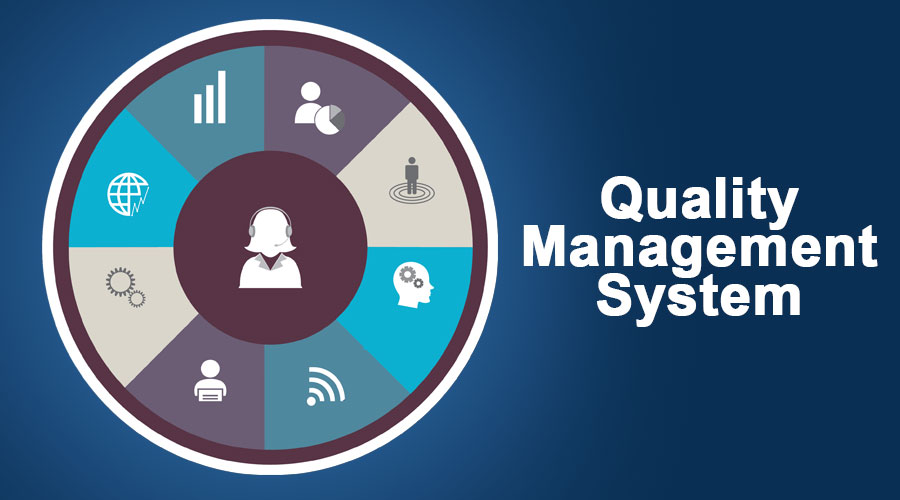Introduction to Quality Management System
A certain number of business processes are put together to ensure that the requirements of the customers are met, and they are highly satisfied, which is called a Quality Management System. It is in correspondence to the strategy and purpose of the organization concerned. Organizational objectives and future desires, terms and conditions, procedures, recorded information, and resources required to execute and sustain it together.
Statistics and random sampling methods were used previously to predict the outcomes of a particular industrial production line. Labor already was the most expensive input in developed countries by the early 20th century, and therefore, the emphasis turned towards team dynamics and early identification of flaws in business processes.
In the 21st century, QMS tied up with sustainability and transparency as both the customers and the investors are currently stressing these two explicit factors for quality delivery. Of all the QMS regimes, the ISO 9000 set of standards is probably the most commonly implemented standards across the globe. E.g. The focus of the natural step is sustainability issues, and it relies upon other quality-related hassles to be reduced within sync thinking, transparency, documentation, and diagnostic discipline. Ken Croucher invented the term “Quality Management System” and the initialism “QMS” in 1991.
Elements of Quality Management System
Here are the different elements of the Quality Management System:
1. Quality Objectives
Quality objectives refers to the pre-determined quality goals of a product to be delivered to the concerned customers. They are framed after a clear discussion with the investors and customers, both in alignment with their requirements. They should be precise and clear for the team members to follow and help ensure high-quality deliverables. They are the starting point of quality assessment.
2. Quality Manual
This is a manual that has all the quality objectives descriptively written in it. This is read by all the team members and is followed accordingly. Any new team member is also first asked to read it. It should be written in simple language for everyone to understand what is to be done and how to proceed further. It is the first document any team and its members can get their hands on.
3. Organizational Structure and Responsibilities
The structure that defines activities such as task allocation, coordination, and supervision which are directed towards achieving organizational goals, is called an organizational structure. Organizational structure influences the actions taken in an organization and provides the foundation based on which further proceeds of the organization can be taken up. It determines the individuals involved in various actions and how does it decide the course of action for an organization.
Organizational structure can be called the glass ceiling through which every person can view his/her respective company and its environment. Organizations are a kind of cluster. Organizational structure varies from organization to organization, relying on organizational objectives. Organizational structure determines the design in which an organization operates and functions. An organizational structure defines the allocation of various responsibilities of numerous functions to the teams and their members across an organization. Organizations need to be efficient, flexible, innovative and caring in order to achieve sustainable competitive advantage.
4. Data Management
Data Management consists of all the disciplines related to data, its sources, and its management. The concept of data management arose when data was accessed randomly from various sources. Since it was then possible to store data in disks and its sources ranged variedly, it was important to manage them. The data was to be well defined so as to avoid its misuse in applications.
5. Processes
Business processes are a step-by-step procedure to complete all the actions meant to develop a product and deliver it to the customers with quality. It starts with purchases and ends with delivery. It requires getting all the things required to develop a product, test it to ensure quality and then, ultimately deliver it.
6. Product Quality Leading to Customer Satisfaction
The ultimate goal of every organization satisfies its customers, and for that, it is of utmost importance that quality products are delivered to the customers. This can be achieved by strictly adhering to the quality objectives and the quality manual.
7. Continuous Improvement
A process that includes continuous improvement, also often called a continuous improvement process, is constant initiatives taken to improve deliverables. These efforts should be made to ensure either incremental or breakthrough improvement in various business processes. Delivery processes are continuously worked on and improvised on the basis of their efficiency, effectiveness, and flexibility.
8. Quality Instrument
In order to make quality deliverables available to the customers, it is important to use quality instruments. This makes efficient working processes a reality.
9. Document Control
Every step in each process needs to be documented. It should be done sincerely. Simple language should be put into use that is understandable by one and all and should get rid of ambiguity by being precise. But it is not necessary for every team member to get access to every document and read it. S/he should only read the ones s/he requires to read. So, document control is equally important.
Benefits of Quality Management System
- Achieve and maintain consistency in all the included business processes.
- Achieve perfection.
- Be efficient in actions taken.
- Achieve customer trust and satisfy them.
- Marketing of business gets a makeover and is more effective.
- Penetrate new markets and regions.
- Making every process and new employees inclusive by incorporating them properly.
- Continuous improvement of deliverables, procedures/processes, and work design.
Recommended Articles
This is a guide to Quality Management System. Here we discuss the elements and the benefits of a quality management system. You can also go through our other suggested articles to learn more –



